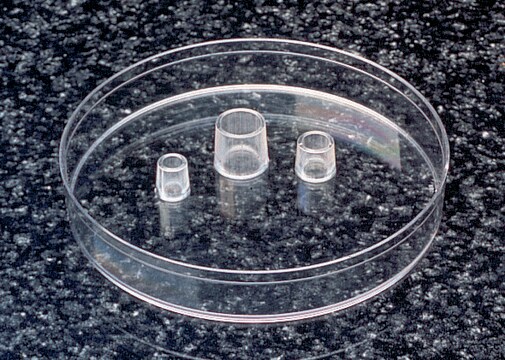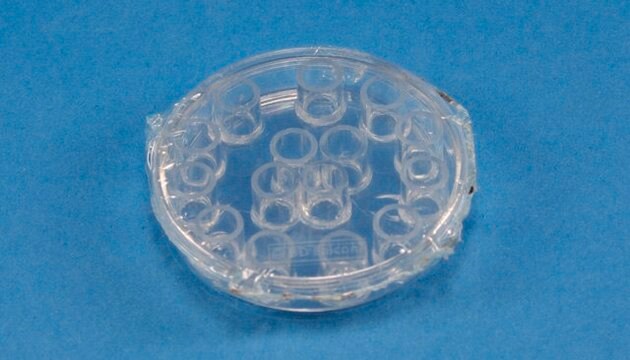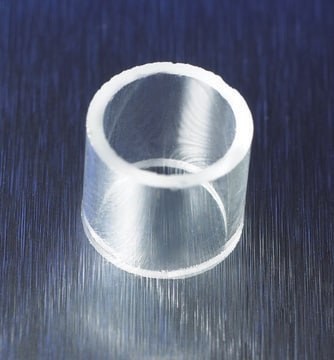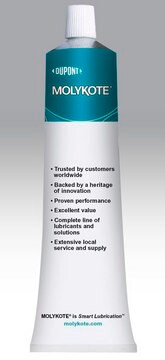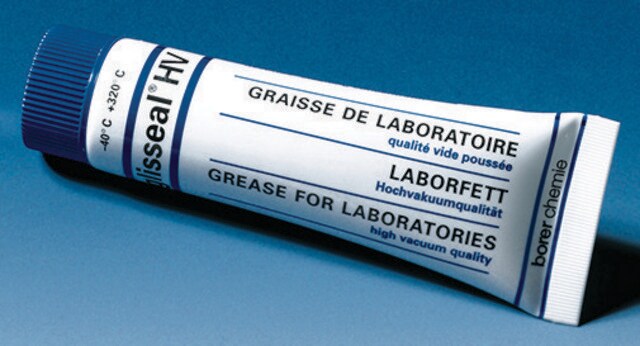C1059
Cloning cylinders, glass
volume 150 μL
Synonym(s):
cloning cylinder, cloning equipment
Sign Into View Organizational & Contract Pricing
All Photos(1)
About This Item
UNSPSC Code:
41106618
NACRES:
NB.22
Recommended Products
material
light brown (tinted)
sterility
sterile; electron beam irradiated
packaging
dish of 15 cylinders
manufacturer/tradename
Millipore TR1004
size
8 mm × 8 mm
volume
150 μL
Looking for similar products? Visit Product Comparison Guide
Related Categories
General description
Individual colonies of transfected cells can be isolated and picked from a plate containing many clones. Isolated clones can be dissociated and passaged free from surrounding cells or pulsed with 50-100 uL growth medium which can be analyzed for secreted products. The sterile cloning cylinders are greased on one end to allow the cylinder to seal to the plate. Cells are then dissociated within the cylinder, resuspeneded, and transferred to a new vessel as a pure colony.
These cloning cylinders are sterlized using electron-beam irradiation. The glass cylinders will display a brown tint after being sterlized at the appropriate dosage level.
These cloning cylinders are sterlized using electron-beam irradiation. The glass cylinders will display a brown tint after being sterlized at the appropriate dosage level.
Packaging
Packaged in 60 mm dish with silicone grease on one end
Certificates of Analysis (COA)
Search for Certificates of Analysis (COA) by entering the products Lot/Batch Number. Lot and Batch Numbers can be found on a product’s label following the words ‘Lot’ or ‘Batch’.
Already Own This Product?
Find documentation for the products that you have recently purchased in the Document Library.
Customers Also Viewed
Tamara D Kolokoltsova et al.
Human cell, 30(4), 249-257 (2017-06-15)
In the present study, we describe a new method of isolation and culture of human villous and extravillous trophoblasts from term placenta. The cultivation of trypsinized placental villous tissue explants, followed by the isolation of cells from outgrowth islets allows
D Geerts et al.
The Journal of cell biology, 147(2), 417-434 (1999-10-20)
Hemidesmosomes are stable adhesion complexes in basal epithelial cells that provide a link between the intermediate filament network and the extracellular matrix. We have investigated the recruitment of plectin into hemidesmosomes by the alpha6beta4 integrin and have shown that the
Maria Chiara Lionetti et al.
Biophysical journal, 118(9), 2319-2332 (2020-04-23)
The nuclear morphology of eukaryotic cells is determined by the interplay between the lamina forming the nuclear skeleton, the chromatin inside the nucleus, and the coupling with the cytoskeleton. Nuclear alterations are often associated with pathological conditions as in Hutchinson-Gilford
Our team of scientists has experience in all areas of research including Life Science, Material Science, Chemical Synthesis, Chromatography, Analytical and many others.
Contact Technical Service